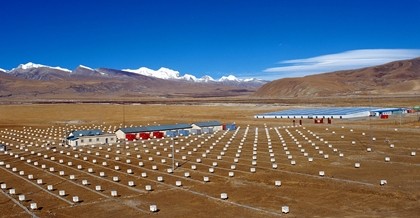China is planning to invest more than 1 billion yuan (about $157 million) to build a high-altitude observatory in southwest Tibet to monitor cosmic rays, local authorities announced on Friday, Sept. 11.
The Xinhua News Agency said that the observatory, which is the second of its kind in China, will be built in the Tibetan Autonomous Prefecture of Garze in southwest China's Sichuan Province, according to Cao Zhen, a research fellow with the Institute of High Energy Physics (IHEP) under the Chinese Academy of Sciences.
The report added that an agreement has been signed between the Garze government and IHEP on Wednesday, Sept. 9, that specifies that the observatory will be built on Haizi Mountain in Daocheng County, which has an altitude of 4,410 meters.
"With an acute gamma ray detector, it is the world's second most expensive cosmic ray observatory, after the IceCube Neutrino Observatory in Antarctica," Cao Zhen said.
The observatory will be able to cover an area of 1 million square meters, detecting rays whose energy ranges from 1 billion trillion to 10,000 billion trillion volts.
The report said that Cao did not give a specific timetable for the construction of the observatory.
Discovered in 1912, cosmic rays are high-energy charged particles that travel from outer space at nearly the speed of light and hit the Earth from all directions. By studying cosmic rays, people can gain knowledge about supernova explosions, black holes and the origin of the universe.
In China, the study of cosmic rays began in 1951.
Currently, most research on cosmic rays is done in the Yangbajain monitoring station in Tibet.



























